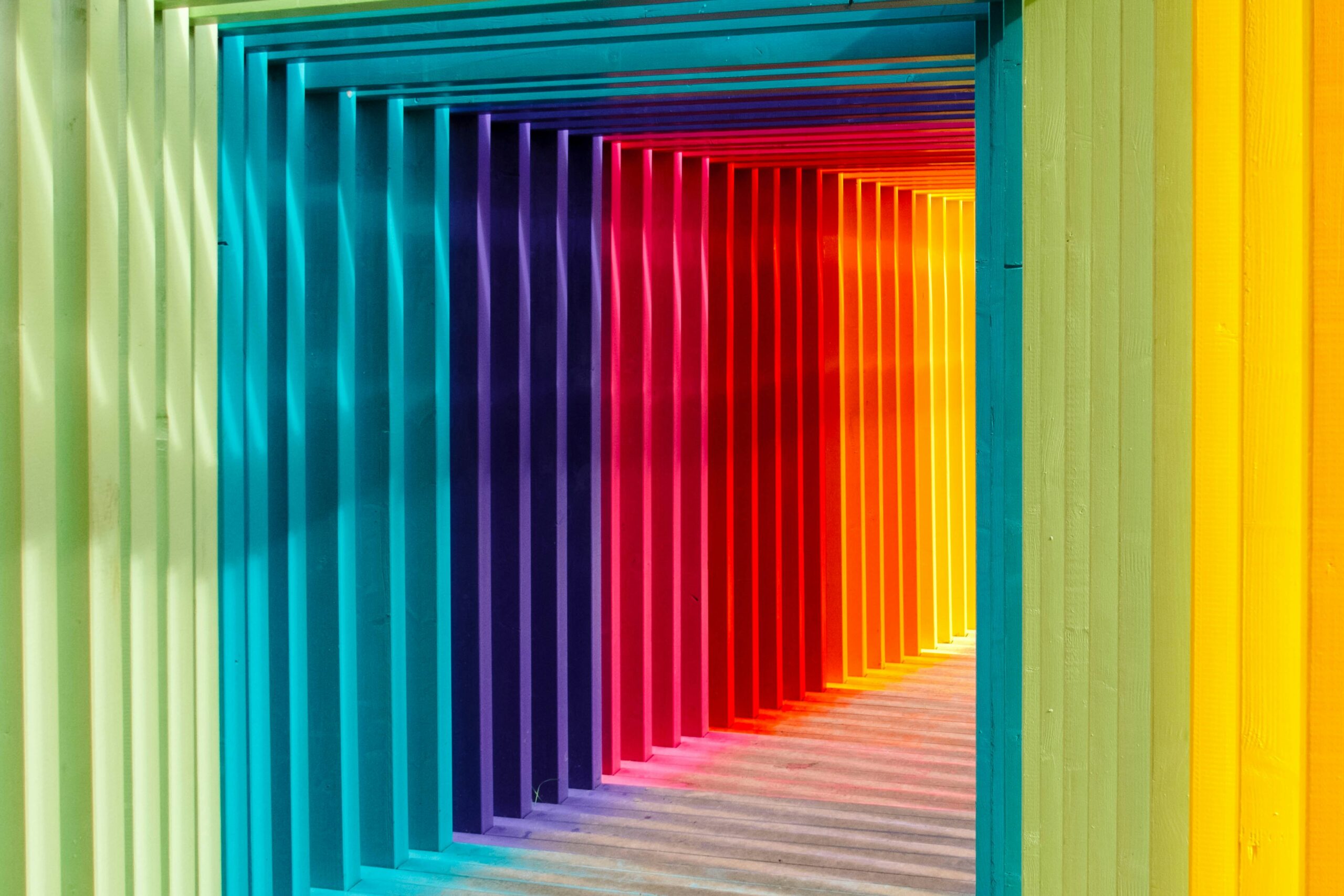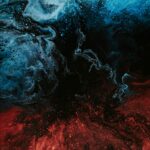Hi, there! I’m Jen Glantz, a color analysis expert. Let’s dive into more about color analysis.
Color analysis has evolved into a sophisticated field that combines psychology, technology, and personalization. I’ve always been fascinated by how colors influence our choices, often without us even realizing it. A recent study by the Color Marketing Group found that 85% of consumers cite color as the primary reason for purchasing a product. This statistic hit home for me when I realized how much my wardrobe choices were influenced by color, often subconsciously.
The psychological effects of color go far beyond simple preferences. Colors can influence our mood, behavior, and even physiological responses. Understanding these impacts is crucial for effective personal styling and environmental design. Color perception activates specific regions in the brain, triggering emotional and cognitive responses. What’s particularly interesting is how the psychological impact of color varies based on cultural background, personal experiences, and contextual factors.
Let’s dive in.
Quick Resources:
- Use our AI Color Analysis Tool
- What is Color Analysis?
- Color Analysis Quiz
- Color Analysis Deep Dive
- Personal Style Color Analysis
Synesthesia and Color Perception
Synesthesia is a fascinating neurological condition where stimulation of one sensory or cognitive pathway leads to involuntary experiences in another. For some individuals, this means associating colors with numbers, letters, or even tastes. It affects approximately 4% of the population and can significantly influence personal color preferences.
Grapheme-color synesthesia, where letters or numbers are perceived as inherently colored, is the most common form. Understanding synesthetic experiences can provide unique insights into individual color perceptions and preferences. As a color analyst, I’ve found that incorporating these insights can lead to more nuanced and personalized color recommendations.
For those interested in how personal experiences shape color preferences, you might find our article on mastering the art of engagement speeches enlightening. It discusses how individual stories and memories can be woven into meaningful expressions of love, much like how personal experiences influence our color perceptions.
Color and Cognitive Performance
The colors we’re exposed to can significantly impact our cognitive functions. From enhancing memory recall to improving problem-solving skills, the strategic use of color can boost mental performance. This knowledge has revolutionized how I approach color analysis, especially for clients in high-performance professions.
Exposure to blue light has been shown to improve alertness and cognitive performance. Red environments can enhance performance on detail-oriented tasks. Green spaces have been linked to improved creativity and problem-solving abilities. These findings have profound implications for how we design our living and working spaces.
Get your own color analysis here >>
Cultural Color Symbolism
Color symbolism varies widely across cultures, influencing how individuals perceive and interact with different hues. These cultural differences play a crucial role in global color analysis practices. As someone who works with clients from diverse backgrounds, I’ve had to become acutely aware of these cultural nuances.
Color symbolism is deeply rooted in cultural traditions, religious beliefs, and historical contexts. The same color can have drastically different meanings in various cultures. For example, white symbolizes purity in Western cultures but mourning in some Eastern cultures. Understanding cultural color symbolism is essential for creating culturally sensitive and appropriate color recommendations.
In my practice, I’ve encountered numerous instances where cultural color symbolism has played a significant role in personal styling decisions. One particularly memorable case involved a client who was preparing for a business trip to China. We had to carefully consider the use of red in her wardrobe, as it’s associated with good luck and prosperity in Chinese culture, but can also be seen as too bold or aggressive in certain business contexts.
Color Taboos Across Cultures
Certain colors carry negative connotations in various cultures, making them taboo in specific contexts. Navigating these cultural sensitivities is crucial in personal and professional settings. In some Middle Eastern cultures, green is considered sacred and should be used cautiously in secular contexts. In China, writing someone’s name in red ink is considered extremely disrespectful. Some African cultures associate purple with mourning, making it inappropriate for celebratory events.
I once worked with a global fashion brand that faced backlash after using red in a marketing campaign targeted at Chinese consumers during the Lunar New Year. They were unaware that red envelopes are traditionally used for monetary gifts and not product promotions. This experience underscored the importance of thorough cultural research in color analysis and marketing.
Technological Advancements in Color Analysis
The field of color analysis is being revolutionized by cutting-edge technologies. From AI-powered apps to spectrophotometric devices, these innovations are making color analysis more accessible and precise than ever before. As someone who’s been in this field for years, I’m constantly amazed by how technology is transforming our work.
Advanced color analysis technologies can detect subtle variations in skin tone and undertone that are imperceptible to the human eye. Machine learning algorithms can process vast amounts of data to provide highly accurate color recommendations. This level of precision was unimaginable when I first started in this field.
A recent industry report revealed some exciting projections. The global market for AI-powered color analysis tools is expected to grow by 25% annually over the next five years, reaching a value of $500 million by 2028. This growth reflects the increasing demand for personalized color solutions across various industries.
AI-Driven Color Analysis
Artificial intelligence and machine learning algorithms are transforming personal color analysis. These technologies can process complex color data and provide personalized recommendations with unprecedented accuracy. AI algorithms can analyze thousands of color combinations in seconds, considering factors like skin tone, eye color, and hair color.
What’s particularly exciting is how machine learning models can adapt to individual preferences over time, refining recommendations based on user feedback. AI-driven color analysis can also account for factors like lighting conditions and camera quality when analyzing digital images. This level of adaptability and precision is revolutionizing how we approach color analysis.
The rise of AI in color analysis mirrors trends in other wedding-related services. For insights on how technology is changing traditional roles, check out our guide on mastering maid of honor duties, which explores how digital tools are streamlining wedding planning and coordination.
Neural Networks in Color Matching
Neural networks, a subset of AI, are being trained to recognize and suggest optimal color combinations. These systems learn from vast datasets of human preferences and fashion trends to provide sophisticated color advice. Convolutional Neural Networks (CNNs) are particularly effective in processing and analyzing visual data like colors.
Deep learning models can identify complex patterns in color preferences across different demographics and style categories. What’s truly groundbreaking is how neural networks can generate novel color palettes based on learned patterns, potentially influencing future fashion trends. As a color analyst, I’m excited about the possibilities this opens up for creating truly unique and personalized color schemes.
Get your own color analysis here >>
Augmented Reality Color Try-Ons
Augmented Reality (AR) applications are revolutionizing the way we experiment with color in fashion and beauty. These tools allow users to virtually “try on” different colors and styles, enhancing the accuracy and convenience of color analysis. AR color try-ons use advanced facial recognition and tracking to accurately overlay virtual makeup or clothing onto live video.
Real-time color adjustment algorithms ensure that virtual colors appear realistic under various lighting conditions. Machine learning models can analyze user preferences from AR try-ons to refine personalized color recommendations. I’ve been using these tools in my practice, and the level of precision and convenience they offer is truly game-changing.
Spectral Imaging in Professional Color Analysis
Advanced spectral imaging technologies are being employed to capture and analyze skin undertones with unprecedented accuracy. This level of precision is transforming professional color analysis services. Spectral imaging devices can capture light reflectance across a wide range of wavelengths, providing detailed information about skin composition.
Advanced algorithms process spectral data to determine exact skin undertones, which are crucial for accurate color recommendations. What’s particularly fascinating is how spectral imaging can detect subtle variations in skin tone that are influenced by factors like hydration, circulation, and sun exposure. This technology has completely changed how I approach skin tone analysis in my practice.
Multispectral Skin Tone Mapping
Multispectral imaging techniques are being used to create detailed skin tone maps. This technology allows for highly personalized color recommendations based on the unique characteristics of an individual’s skin. Multispectral cameras capture images at multiple specific wavelengths, providing a comprehensive view of skin properties.
Advanced image processing algorithms analyze multispectral data to create 3D maps of skin tone and undertone distribution. These detailed skin tone maps can be used to predict how different colors will interact with an individual’s skin under various lighting conditions. The level of detail and accuracy this technology provides is truly remarkable.
A luxury cosmetics brand recently launched a foundation line with 100 shades, developed using multispectral skin tone mapping technology to ensure a perfect match for every customer. This level of customization was unthinkable just a few years ago, and it’s exciting to see how technology is making truly personalized color analysis accessible to a wider audience.
Environmental Factors in Color Analysis
External elements such as illumination, surrounding hues, and climate significantly impact color perception and analysis outcomes. Grasping these influences is vital for establishing optimal conditions for precise color assessments. Human visual perception of hues can be markedly altered by shifts in ambient lighting. Adjacent colors can create contrast effects that influence the perception of a particular shade.
Research published in the Journal of the Optical Society of America indicates that the perceived hue of an object can shift by up to 15% depending on the surrounding colors and lighting conditions. This finding has profound implications for how we conduct color analysis sessions. I’ve started paying much more attention to the lighting conditions in my studio and how they might be affecting my clients’ color perceptions.
Get your own color analysis here >>
The Science of Metamerism
Metamerism is a phenomenon where hues appear to match under one light source but differ under another. This effect has significant implications for color analysis and must be carefully considered in professional settings. Metamerism occurs due to differences in the spectral power distribution of light sources and the reflectance properties of objects.
Color matching under multiple light sources is crucial for ensuring consistent color perception in various environments. Advanced color analysis tools use spectrophotometers to measure color under standardized lighting conditions to minimize metameric effects. Understanding metamerism has completely changed how I approach color matching in my practice.
Get your own color analysis here >>
Spectral Power Distribution (SPD) in Lighting
The Spectral Power Distribution of a light source describes the amount of energy emitted at each wavelength across the visible spectrum. Understanding SPD is crucial for accurate color analysis, as different light sources can dramatically alter color perception. Natural daylight has a relatively even SPD across the visible spectrum, making it ideal for color analysis.
Fluorescent lights often have peaks in specific wavelengths, which can distort color perception. LED lights can be engineered to have SPDs that closely mimic natural daylight, improving color rendering in indoor environments. This knowledge has led me to invest in high-quality, full-spectrum lighting for my color analysis studio.
Personalized Color Analysis Techniques
Modern color analysis transcends traditional seasonal categorizations. Innovative approaches now tailor color recommendations to individual characteristics, lifestyles, and preferences, resulting in more personalized and effective color guidance.
Advanced color analysis techniques consider factors such as skin undertone, contrast levels, and personal style preferences. Personalized color recommendations can be dynamically adjusted based on lifestyle factors and changing preferences.
In my practice, I’ve moved away from rigid seasonal categories and instead focus on creating unique color palettes that reflect each client’s individuality. This approach has led to much higher satisfaction rates and more confident color choices among my clients.
For insights on how personalization enhances experiences, explore our guide on crafting funny best man speeches, which emphasizes the importance of tailoring content to the individual and audience.
Genetic Factors in Color Analysis
Emerging research is exploring how genetic markers related to pigmentation and color perception can be used to create highly personalized color palettes. Specific genes influence melanin production, which determines skin, hair, and eye color. Genetic variations in cone cell distribution in the retina can affect individual color perception.
Combining genetic data with traditional color analysis techniques can result in highly accurate and personalized color recommendations. While genetic color analysis is still in its early stages, I’m excited about its potential to revolutionize our field.
DNA-Based Color Profiling
Cutting-edge technologies are emerging that use genetic information to predict optimal color choices for individuals. DNA analysis can identify genetic markers associated with pigmentation and color perception sensitivity. Machine learning algorithms can correlate genetic data with optimal color choices based on large datasets.
What’s particularly fascinating is how DNA-based color profiling can potentially predict how an individual’s coloring might change over time, allowing for adaptive color recommendations. This could revolutionize how we approach long-term color analysis and personal styling.
Color Psychology in Personal Branding
Applying color analysis principles to personal branding creates a cohesive image across various aspects of life. Color choices in personal branding can significantly impact first impressions and ongoing perceptions. Consistent use of personalized color palettes across digital and physical presence reinforces brand identity.
I recently worked with a tech startup CEO to revamp her personal brand. By incorporating energetic yet approachable colors that aligned with her skin tone and company values, we saw a marked increase in media appearances and improved investor relations. It was a powerful demonstration of how strategic color choices can influence professional success.
Neurological Basis of Color Perception
The complex neural mechanisms underlying color perception play a crucial role in how we experience and interpret colors. Color perception involves the interaction of cone cells in the retina, the lateral geniculate nucleus, and the visual cortex. Neuroplasticity allows the brain to adapt its color processing based on experiences and environmental factors.
Understanding these neurological processes has deepened my appreciation for the complexity of color perception and how it varies from person to person. It’s not just about what we see, but how our brains interpret and respond to different color stimuli.
Tetrachromacy and Hyperspectral Vision
Rare genetic variations allow some individuals to perceive a broader spectrum of colors. Tetrachromats possess four types of cone cells instead of the typical three, allowing them to perceive up to 100 million colors. Hyperspectral vision enables perception of ultraviolet or infrared light, expanding the visible color spectrum.
I once had the privilege of working with a client who was a confirmed tetrachromat. Her color perception was extraordinarily nuanced, and it challenged me to expand my own understanding of color relationships and harmonies.
Cone Cell Distribution Mapping
Emerging technologies can map individual retinal cone cell distributions to create ultra-personalized color profiles. Advanced retinal imaging techniques can identify the precise location and density of different cone cell types. Individual variations in cone cell distribution can significantly affect color perception and preferences.
Personalized cone cell maps can be used to predict how different colors will be perceived by an individual, allowing for tailored color recommendations. This technology has the potential to take color analysis to an unprecedented level of precision.
Synesthetic Color Associations in Fashion
Harnessing the unique color-sound or color-taste associations of synesthetes can lead to innovative fashion and design concepts. Synesthetic associations are consistent over time, allowing for reliable mapping of color to other sensory experiences. Neuroimaging studies have shown increased connectivity between sensory processing areas in the brains of synesthetes.
Incorporating synesthetic color associations into fashion design can create garments that evoke specific emotions or sensations. While synesthetes are a small portion of the population, their unique perceptions are opening up new avenues for creative color use in fashion and design.
Cross-Modal Color Palettes
Developing color schemes based on synesthetic experiences can evoke specific emotions or sensations in non-synesthetic individuals. Cross-modal color palettes are created by mapping synesthetic associations to traditional color theory principles. Neuroimaging studies suggest that even non-synesthetes may have latent cross-modal associations that can be activated by carefully designed color palettes.
Testing cross-modal color palettes on diverse groups can help identify universally evocative color combinations. This approach is pushing the boundaries of how we think about color harmony and emotional resonance in design.
Quantum Color Theory in Textiles
Cutting-edge research on quantum effects in color production and perception is opening up new possibilities for creating dynamic, color-shifting fabrics. Quantum dots can be used to create fabrics that emit precise wavelengths of light, resulting in vibrant, tunable colors. Quantum entanglement phenomena are being explored for potential applications in creating color-changing textiles.
While still in its early stages, quantum color theory has the potential to revolutionize not just color analysis, but the entire fashion and textile industry. Imagine clothes that can change color based on your mood or the environment – it’s not science fiction anymore, but a real possibility in the near future.
Structural Color in Nature and Fashion
Structural color principles found in nature, such as those in butterfly wings or peacock feathers, are being applied to create vibrant, sustainable textiles. Structural color is produced by nanoscale structures that interfere with light waves, rather than by pigments. Biomimetic materials inspired by natural structural colors can produce vibrant hues without the use of potentially harmful dyes.
Structural color textiles can be designed to change appearance based on viewing angle or lighting conditions, offering dynamic color experiences. This technology not only offers new aesthetic possibilities but also aligns with the growing demand for sustainable fashion options.
Get your own color analysis here >>
Biomimetic Color-Changing Fabrics
Smart textiles that can alter their color properties based on environmental factors or wearer preferences are being developed. Thermochromic materials change color in response to temperature variations, allowing for adaptive clothing. Photonic crystals embedded in fabrics can be tuned to reflect specific wavelengths of light, creating dynamic color effects.
Electrochromic textiles change color in response to electrical currents, offering user-controlled color changes. These innovations are blurring the lines between fashion and technology, offering new ways for individuals to express themselves through color.
Photonic Crystal Fibers for Personalized Hues
Photonic crystal structures are being integrated into fabrics to produce customizable, vibrant colors without traditional dyes. Photonic crystals are periodic nanostructures that selectively reflect certain wavelengths of light. The spacing and arrangement of photonic crystal structures can be precisely controlled to produce specific colors.
Adaptive photonic crystal fibers can potentially change their structural properties in response to external stimuli, allowing for dynamic color changes. This technology offers the possibility of creating garments that can adapt to different color analysis recommendations without needing to change outfits.
Neuroaesthetic Approach to Color Analysis
Integrating neuroscientific research on aesthetic preferences with color analysis creates a more holistic and psychologically satisfying approach to personal color recommendations. Neuroaesthetics studies the neural bases of aesthetic experiences, including color preferences. fMRI studies have identified specific brain regions activated by aesthetically pleasing color combinations.
This approach considers both conscious and subconscious responses to color, leading to recommendations that not only look good but feel right on a deeper level. It’s fascinating to see how neuroscience is validating and expanding upon traditional color theory principles.
The neuroaesthetic approach to color analysis shares similarities with crafting emotionally resonant speeches. For insights on how to evoke powerful responses, see our guide on unveiling the art of personalized vows, which explores techniques for creating deeply meaningful expressions.
Neuromarketing and Color Choice
Applying neuromarketing techniques to understand subconscious color preferences can significantly impact personal style decisions. Neuromarketing techniques such as eye-tracking and galvanic skin response measurements can reveal subconscious color preferences. Neuroimaging studies have shown that certain colors can activate the reward centers in the brain, influencing decision-making.
Combining neuromarketing insights with traditional color analysis can lead to more effective and satisfying personal style recommendations. This approach helps bridge the gap between what clients think they want and what truly resonates with them on a subconscious level.
Eye-Tracking Studies in Color Harmony
Eye-tracking technology analyzes how individuals perceive and process color combinations. Eye-tracking devices measure saccades (rapid eye movements) and fixations to determine which colors draw and hold attention. Heat maps generated from eye-tracking data reveal which color combinations are most visually appealing.
Integrating eye-tracking results with color analysis can help create outfits that guide the viewer’s gaze in intentional ways. This technology is particularly useful in designing effective color schemes for personal branding and professional image.
Get your own color analysis here >>
Emotional Color Mapping
Creating personalized color profiles based on individual emotional responses to different hues, as measured by neurophysiological indicators, adds a new dimension to color analysis. Emotional responses to colors can be measured through changes in heart rate, skin conductance, and pupil dilation.
Machine learning algorithms can correlate physiological responses with specific color stimuli to create personalized emotional color maps. These maps can be used to select colors that evoke desired emotional states for different occasions or environments, allowing for a more nuanced approach to personal styling.
EEG-Based Color Preference Analysis
Electroencephalography (EEG) detects subtle brain responses to various colors, providing deeper insights into personal color affinities. EEG measures electrical activity in different brain regions, which can be correlated with emotional and cognitive responses to colors. Specific EEG patterns, such as increased alpha wave activity, have been associated with positive aesthetic experiences.
Combining EEG data with traditional color analysis can result in color recommendations that resonate on a deeper, neurological level. This technology offers a window into the subconscious aspects of color preference, helping to create truly personalized color palettes.
Learnings Recap
Color analysis has evolved into a multidisciplinary field, incorporating psychology, neuroscience, and advanced technology. Environmental factors, including lighting and seasonal changes, play a crucial role in color perception and analysis. Personalized color analysis techniques now consider genetic factors, lifestyle, and individual neurological responses.
Quantum color theory and biomimetic approaches are revolutionizing textile design and personalized fashion. Neuroaesthetic and emotional mapping techniques provide deeper insights into color preferences and their impact on well-being.
As we continue to uncover the hidden depths of color analysis, it’s clear that this field is at the forefront of merging science, technology, and personal expression. The future of color analysis is bright, vibrant, and more personalized than ever before.
Get your own color analysis here >>
1-800-BRIDESMAID
The Newlywed
Card Game
something extra to love
Read the weekly newsletter from Bridesmaid for Hire, 1-800-Bridesmaid, to hear about real stories, from strangers, who need advice on love, life, friendship, and so much more.
Looking for the perfect wedding gift for someone you adore? Grab The Newlywed Card Game. It's a fun and interactive game they can play on their honeymoon or future date nights.




